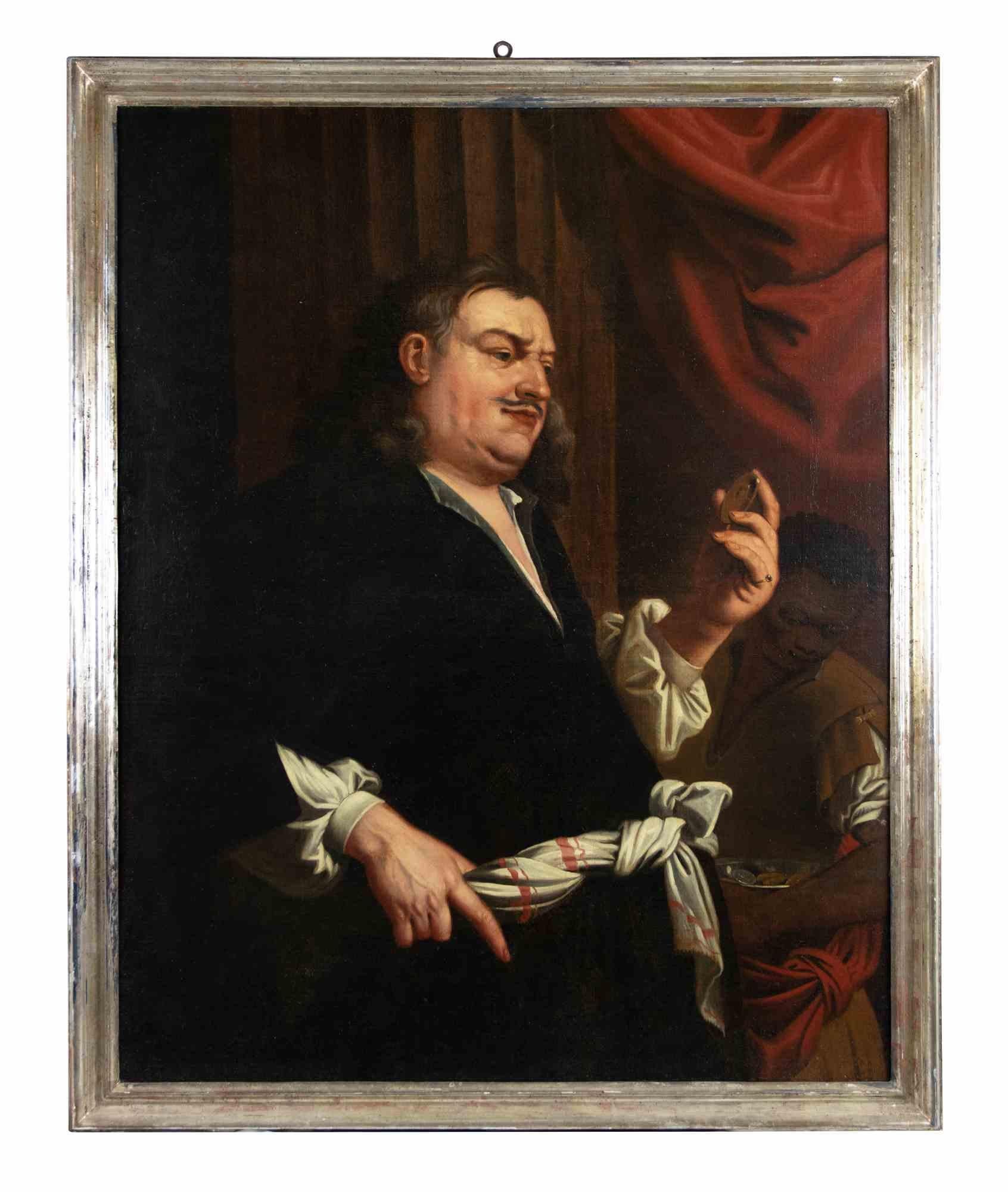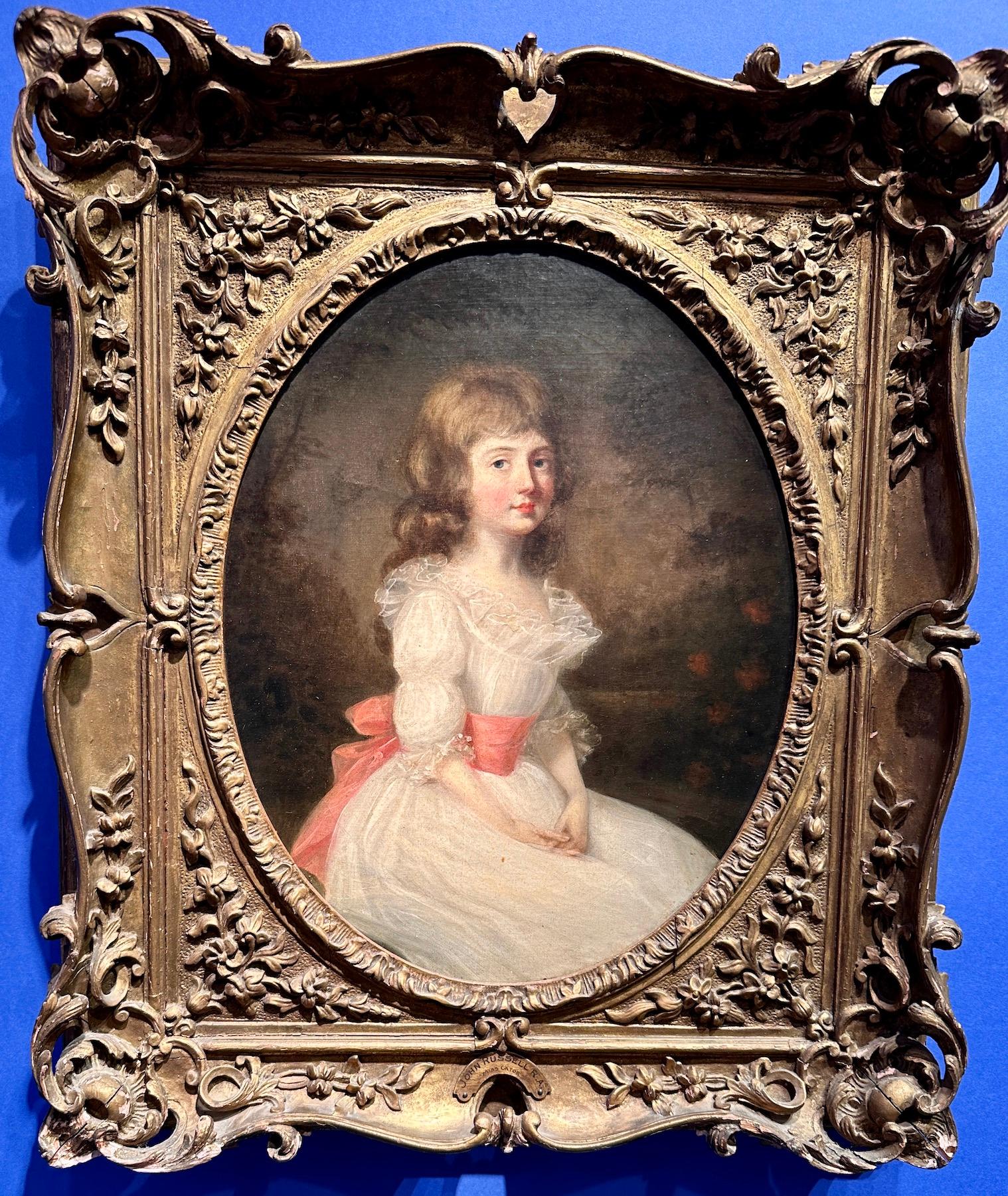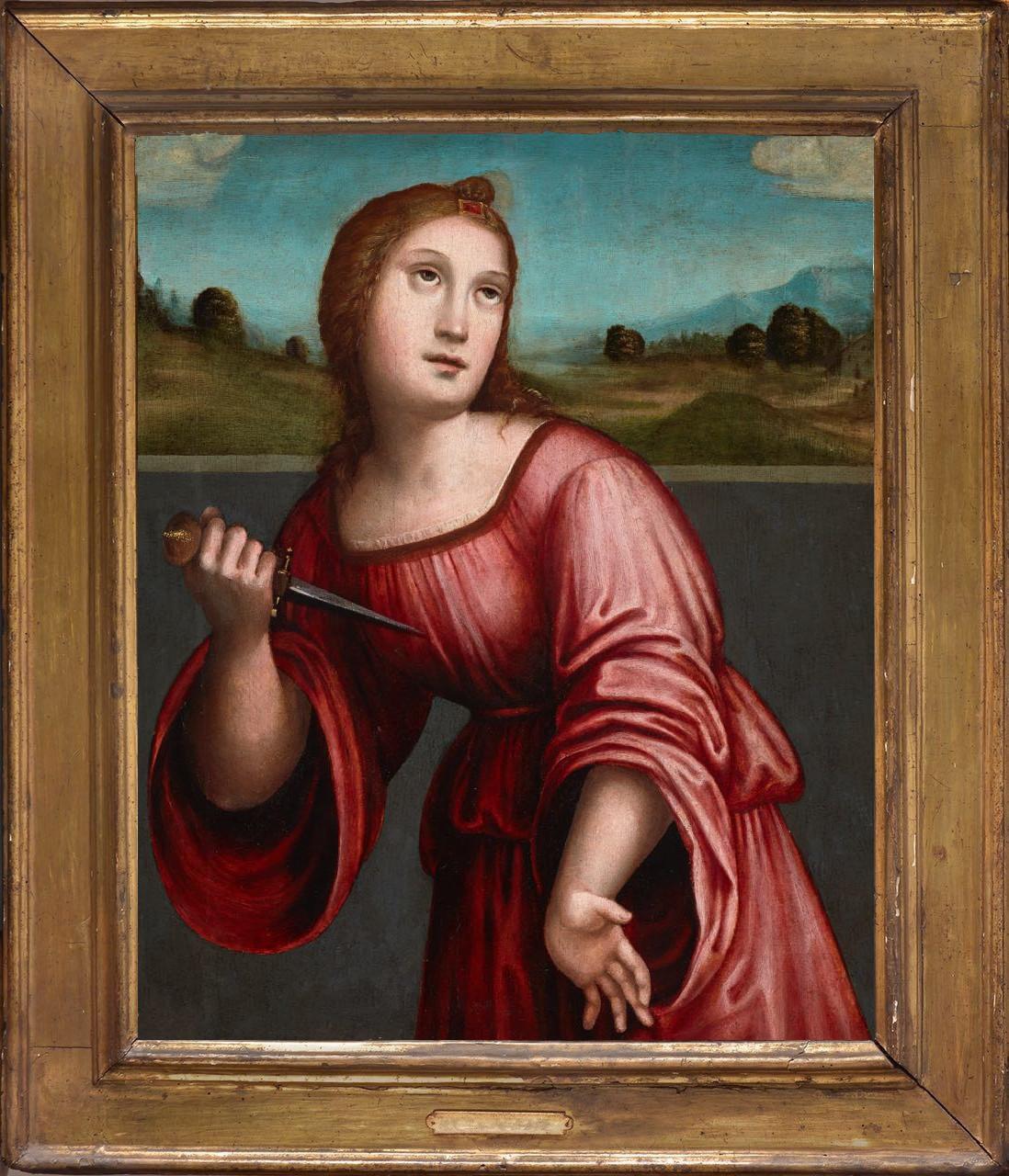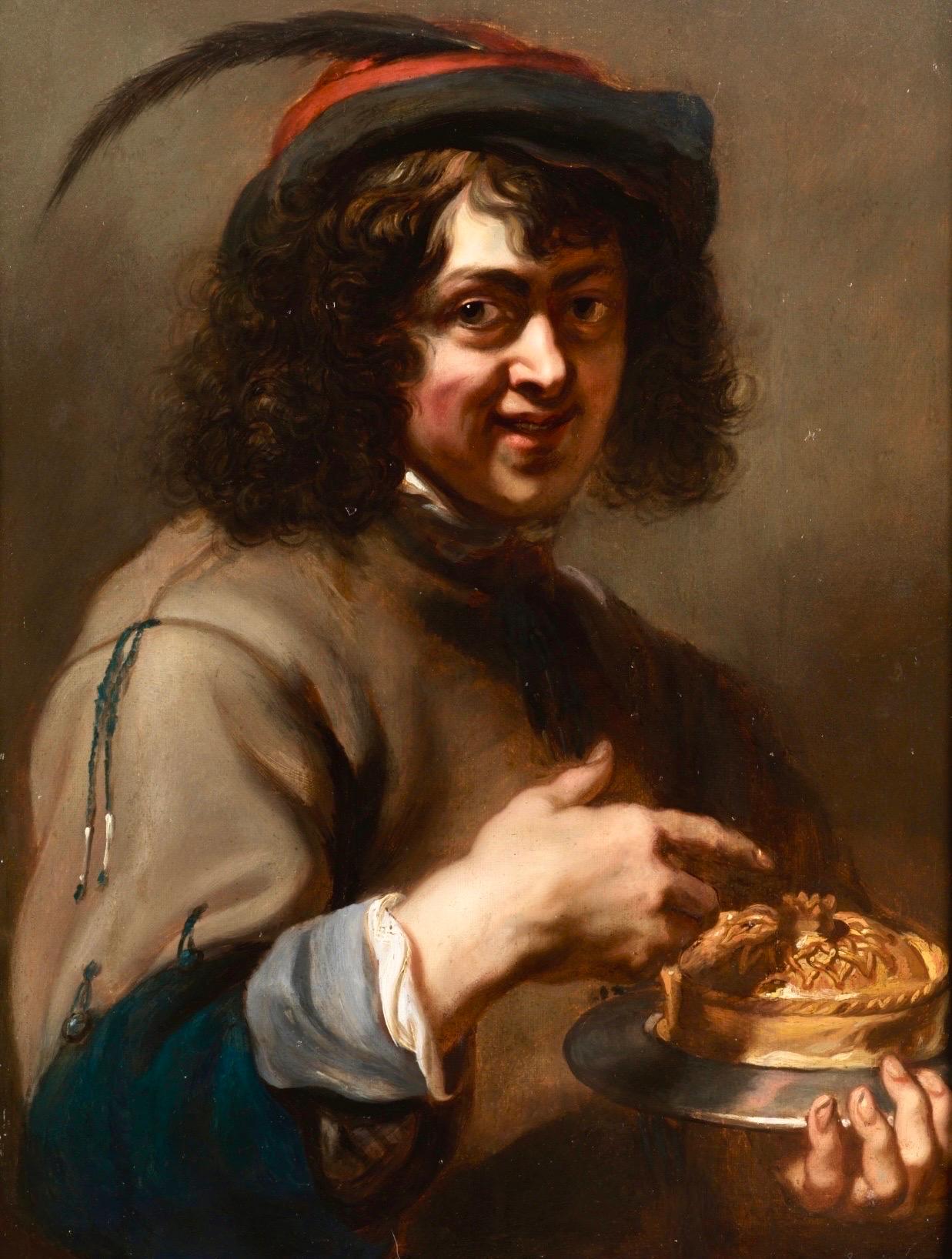Items Similar to Portrait of Lady Bagot - Niece to the Duke of Wellington
Want more images or videos?
Request additional images or videos from the seller
1 of 24
Sir John HoppnerPortrait of Lady Bagot - Niece to the Duke of Wellington1807
1807
About the Item
The sitter is Mary Charlotte Anne Wellesly-Pole, eldest daughter of William, 4th Earl of Mornington and niece to the Duke of Wellington. This is one of Hoppner's best works. The sitter is a beautiful young woman painted in an elegant style with impressionist brushstrokes describing the background. Frame is a rare hand-carved a period British Rococo frame with plaque. You can find a Hoppner hanging in the Frick Collection next to Sir joshua reynolds and John Constable.
The painting was sold in 1924 to John Ford of Detroit for a sum of $30,000.
$30,000 in 1924 is equivalent in purchasing power to about $456,971.93 today, an increase of $426,971.93 over 97 years. The dollar had an average inflation rate of 2.85% per year between 1924 and today, producing a cumulative price increase of 1,423.24%.
Engraved in mezzotint by J.C. Webb, 1904.
Provenance:
Property of John B. Ford Marital Trust. Mary Charlotte Anne Wellesley-Pole, eldest daughter of William, 4th Earl of Mornington and niece to the Duke of Wellington, was born in 1786 and married in 1806 to Sir Charles Bagot, Under Secretary for the State for Foreign Affairs, Minister Plenipotentiary, Ambassador to St. Petersburg, The Hague and Vienna - also Governor General of Canada.
Sir Alan Desmond Bagot, Bt., of Levens Hall, Milnthorpe, Westmorland
M. Knoedler & Co.
Exhibitions:
P. & D. Colnaghi & Co.'s Gallery, London, 1904, number 11, lent by Colonel Bagot, M.P.
Literature:
'Hoppner' by McKay and Roberts, facing page 10, and catalogued there on page 10: 'A charmingly painted picture.'M
- Creator:Sir John Hoppner (1758 - 1810, British)
- Creation Year:1807
- Dimensions:Height: 30 in (76.2 cm)Width: 25 in (63.5 cm)
- Medium:
- Movement & Style:
- Period:1780-1789
- Condition:Some small losses on a few the extreme edges to the period English rococo frame otherwise work presents very well.
- Gallery Location:Miami, FL
- Reference Number:1stDibs: LU38538728172
Sir John Hoppner
Nominally the son of a German doctor and a Lady in Waiting to the Princess of Wales, John Hoppner was dogged by rumours that he was the illegitimate son of the future King George III. No strong evidence has ever been discovered to support the allegation, but it is true that in his education and early career Hoppner benefited from a considerable degree of royal sponsorship. He was brought up as a child of the Chapel Royal, tutored in the Royal Library where King George paid great attention to his progress and finally presented with an allowance from the royal purse in order that he might establish himself as a painter. His early success justified these attentions, and he won a Gold Medal at the Royal Academy Schools in 1782, exhibiting frequently from 1780 until the year before his death. In 1789 he was appointed painter to the Prince of Wales, many of whose circle he painted. His early works display a great debt to the later portraits of Reynolds, but he soon developed an individual style that is distinguished by bravura and vivacity, combined with a strong feeling of character. From the 1790s he was also the only serious rival to the young Lawrence and with him was responsible for painting the finest Romantic portraits of the Regency period. These works (of which the present portrait is a fine example) show a deliberate move away from the classicism of Reynolds, towards a more emotionally engaging yet naturalistic image.
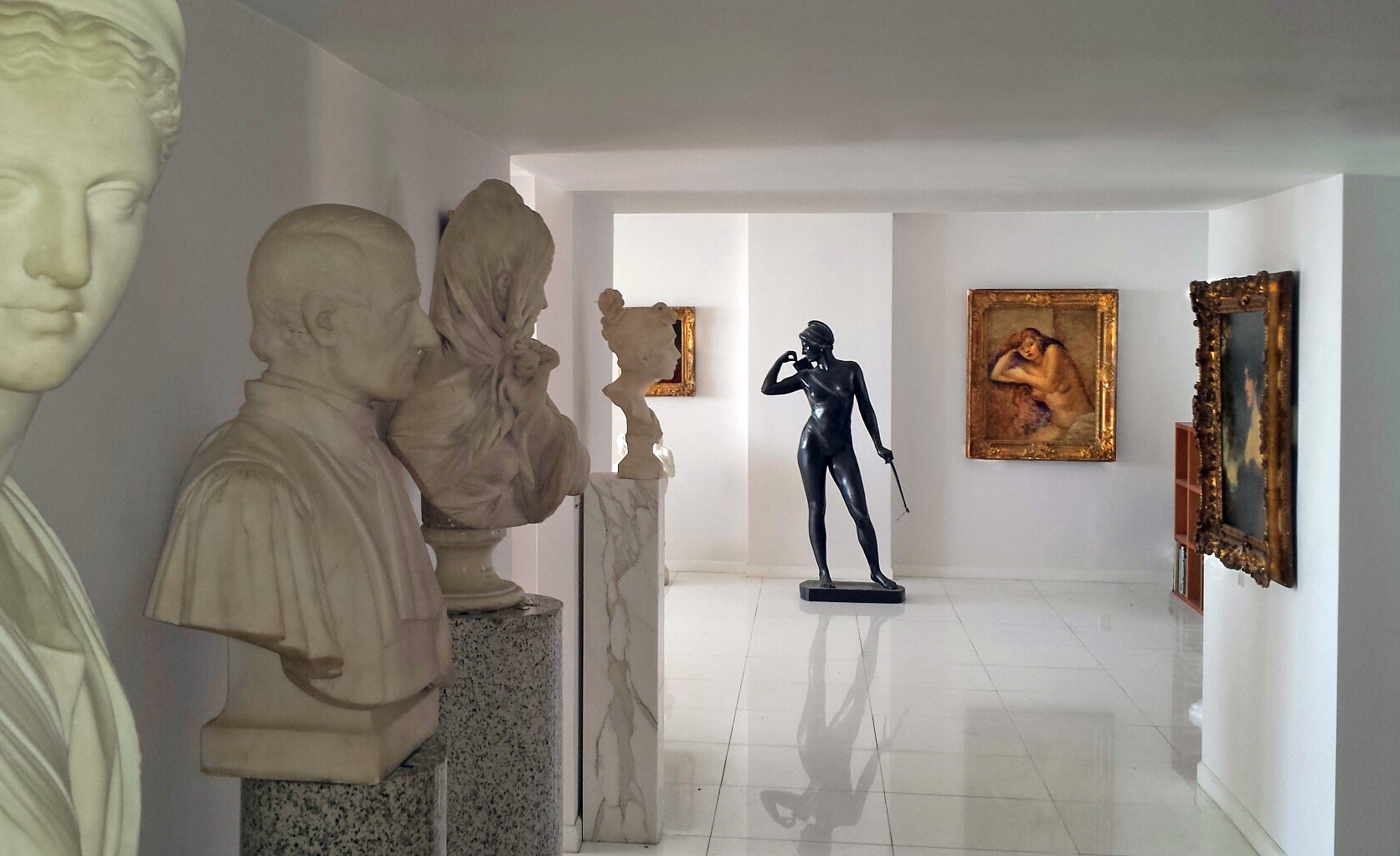
About the Seller
4.9
Gold Seller
These expertly vetted sellers are highly rated and consistently exceed customer expectations.
Established in 2005
1stDibs seller since 2016
102 sales on 1stDibs
Typical response time: 1 hour
- ShippingRetrieving quote...Ships From: Miami, FL
- Return PolicyA return for this item may be initiated within 3 days of delivery.
More From This SellerView All
- Portrait of Mr. Bagnal Sir Godfrey Kneller and StudioBy studio of Sir Godfrey KnellerLocated in Miami, FLSir Godfrey Kneller with the studio, Inscribed Mr. Bagnal Lower left. Godfrey Kneller and studio, relined, old cleaning. Old Frame. The frame was repainted and has some chipping an...Category
1710s Old Masters Portrait Paintings
MaterialsOil
- Portrait of Lady Caroline PriceBy George RomneyLocated in Miami, FLDESCRIPTION: Perhaps the best Romney in private hands. If Vogue Magazine existed in the late 18th century, this image of Lady Caroline Price would be ...Category
1970s Old Masters Portrait Paintings
MaterialsCanvas, Oil
- Mrs. Bagnel -By Sir Godfrey KnellerLocated in Miami, FLSir Godfrey Kneller with studio. Let us know if you want to both at the same time and we will see what we can do. See our other accompanying portaint of Mr. Bagnel - They work tog...Category
1690s Old Masters Portrait Paintings
MaterialsOil
- Portrait of Mr. Bagnal ( Pair with Mrs. Bagnal ) Sir Godfrey Kneller and StudioBy Sir Godfrey KnellerLocated in Miami, FLSir Godfrey Kneller with studio, Inscribed Mr. Bagnal Lower left. Godfrey Kneller and studio , Unlined, old cleaning. Old Frame. Frame was repainted...Category
1710s Old Masters Portrait Paintings
MaterialsOil
- The Eyes of the Lord Moves Round (Howard Finister in Ghana ? )Located in Miami, FL"The Eyes of the Lord Moves Round in All Places Beholding the Good and the Evil" Is Kwame Akoto ( All-Mighty God) the Ghanian Howard Finister? His works...Category
Early 2000s Folk Art Figurative Paintings
MaterialsMixed Media, Plywood, Oil
- Sexy French Cabaret Dancers - Folies Bergere Pulp Paperback Book CoverLocated in Miami, FLCampy and sexy illustration of two French chorus girls for the mid-century Avon paperback Les Girls. Story of the Folies Bergere Unsigned and unframed. George Ziel...Category
1950s Impressionist Figurative Paintings
MaterialsMixed Media, Oil, Board
You May Also Like
- Fine 17th Century Italian Old Master Oval Portrait of Lady on Copper Wooden FrmLocated in Cirencester, GloucestershirePortrait of a Lady (female saint?) Italian School, 17th century oil on copper, framed frame: 9 x 8 inches board: 5 x 4 inches provenance: private collection condition: very good and ...Category
17th Century Old Masters Figurative Paintings
MaterialsOil
- A Rich Merchant - Painting by Unknown - 18th CenturyLocated in Roma, ITA rich merchant is an original old master artwork realized in the 18th Century. Mixed colored oil painting on canvas depicting a merchant looking at a coin in his left hand. Provena...Category
18th Century Old Masters Figurative Paintings
MaterialsOil
- 18th century Portrait of a young girl, Miss Cator in a landscape, white dressBy John RussellLocated in Woodbury, CTPortrait of a young British Girl, in her white dress with Pink Sash. Choosing to acquire an 18th-century portrait of a young girl by English artist John Russell is an opportunity to...Category
1780s Old Masters Portrait Paintings
MaterialsCanvas, Oil
- Lucretia, by Giacomo Raibolini Francia. Detto il Francia. Oil on panel, framedLocated in Brooklyn, NYGiacomo used to paint with his brother Giulio, identifying their works with the monogram «I I». The strong influence of his father, Francesco, is undeniable in all his works, althoug...Category
16th Century Old Masters Figurative Paintings
MaterialsOil, Wood Panel
- 17th century Flemish Old Master - A young boy enjoying a pie, allegory of tasteLocated in Antwerp, BE17th century Flemish old master painting, Allegory of taste The very fine painting depicts a young boy, cheekily tasting a delicious pie. He's looking at the viewer with eyes twinkl...Category
17th Century Old Masters Figurative Paintings
MaterialsCanvas, Oil
- Portrait of Jean-Baptiste Greuze, painted on linen by his daughter Anna GreuzeLocated in PARIS, FRThis replica of the last self-portrait of Jean-Baptiste Greuze painted in 1804, executed by his daughter Anna at her father's side and recently rediscovered, provides us with a poignant image of the great artist, represented with panache despite the disillusions of life. 1. Jean-Baptiste Greuze Jean-Baptiste Greuze was the sixth child of a roofer from Tournus and retained a certain rusticity in his behaviour from his provincial childhood, beyond his taste for describing picturesque scenes of the countryside. He initially started training with a little-known painter from Lyon, Charles Grandon, before his genius was recognised in Paris where he became a full-time student of the Académie (of Painting) in 1755. He exhibited his work for the first time at the Salon during the summer of 1755, before leaving on a trip to Italy in the company of Louis Gougenot, abbot of Chezal-Benoît. Upon his return to Paris, Greuze became a prolific painter, participating widely in the Salons held between 1759 and 1765, to which he sent no less than 63 paintings: numerous genre scenes (The Marriage Contract, The Beloved Mother), but also portraits of his family circle, of courtiers and art lovers, or of his colleagues. The Academy closed the doors of the Salons to him in 1767 for not having produced his reception piece within six months of his reception, as was the tradition. He worked actively on this painting (Emperor Severus rebukes Caracalla, his son, for trying to assassinate him ) until the summer of 1769, tackling historical and mythological subjects for the first time. Once this was completed, he was then fully admitted to the Academy, but as a genre painter, and not as an historical painter, which had been one of the greatest humiliations of his life. Greuze then refused any participation in events organised by the Academy or its successor, the Academy of Fine Arts until 1800. Abandoning history painting, he gave a new twist to genre scenes, bringing them closer to history painting, as in this pair of canvases which constitutes some of his masterpieces: The Paternal Curse: The Ungrateful Son and The Paternal Curse: The Punished Son . Married in 1759 to Anne-Gabrielle Babuti, the daughter of a Parisian bookseller, his marriage was unhappy and his wife probably frequently unfaithful. The institution of divorce enabled him to record their separation in 1793, keeping his two daughters Anna-Geneviève, born in April 1762, and Louise-Gabrielle, born in May 1764, with him. Little is known about his daughter Anna except that she was herself a painter and lived with her father until his death. It is likely that most of the paintings she produced up to that date were attributed to her father, whose technique she shared to a great extent, making it extremely difficult to establish an autonomous corpus of her paintings. Greuze died in his studio at the Louvre on March 21st 1805. The attention paid to the expressivity of his characters and the emotional charge they convey enabled Jean-Baptiste Greuze to enjoy immense popularity with the eighteenth-century public, and they still constitute Greuze's true modernity. As the artist said, "I dipped my brush in my heart". Greuze was also an exceptional draughtsman and a portraitist of immense talent and exceptional longevity who painted both the Dauphin (the son of Louis XV and father to Louis XVI) and the young Napoleon Bonaparte. 2. Greuze's self-portraits Greuze was very much influenced by Dutch paintings during all his life. While the source of his inspiration for genre scenes can be found in Gerard Dou...Category
Early 1800s Old Masters Portrait Paintings
MaterialsLinen, Oil

